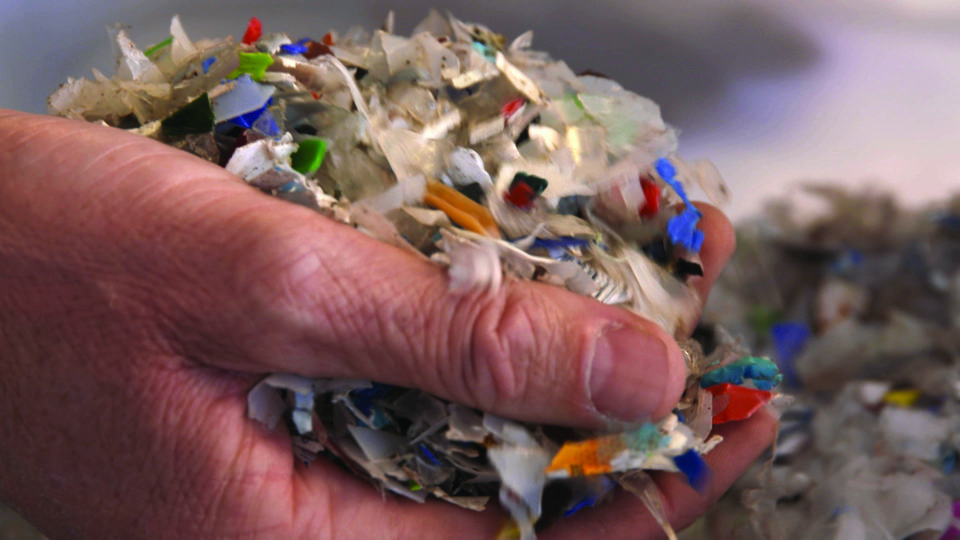By Richard Silcock.
The use of waste plastic in asphalt has already been trialed for road pavements here.
Three years ago a three-way partnership made up of Downer’s Road Science research team, Enviro NZ and the New Plymouth District Council developed an asphalt called Plasmix with plastic made up of types three to seven that are common hard plastics used for manufacturing food containers, i.e., milk and juice bottles, butter containers etc, and polystyrene packaging.
“What we have developed is a combination of traditional asphalt and shredded plastic which we have called Plasmix,” Road Science’s general manager, Murray Robertson, told Contractor magazine back in 2019.
While not wanting to divulge too much information around the analytic research that was carried out prior to testing, technical development manager at Road Science, Darcy Rogers told us that putting bitumen and plastic together is relatively straight forward as they are both derived from crude oil.
“Normal asphalt is created by mixing aggregate, bitumen and a binder at a high temperature of around 160 degrees centigrade. By adding plastic, which essentially melts and blends with the bitumen, we get a product that is much higher performing and our initial tests to date have found that it lasts longer and there is no leaching even when broken up.
“Ninety-five percent of a road’s composition is aggregate and that is the primary component that is worn down by traffic over time. As the plastic is part of the bitumen mix there is very little opportunity for it to come into direct contact with vehicle tyres, so any release of the plastic particles is very unlikely.
“In developing the product we put a lot of effort into identifying the optiminal size of the shredded plastic which is carried out by Enviro NZ.
“Another benefit we found during testing is that the performance of a road surface is enhanced by adding plastic types three to seven particularly in relation to its resilience to water and rutting.”
Downer, as a part of its 10-year road maintenance contract with the New Plymouth District Council trialled Plasmix on a section of road near New Plymouth’s Pukekura Park and it was the first time here that plastic, as an asphalt component, has been used to surface a public road. Some 500 kilograms of shredded hard plastic waste was used over a 100-metre stretch of the road and, so far, it is showing excellent results.
While it has not yet been tested on a main highway, where usually the aggregate is heavier and the asphalt layer thinner, recently Downer used it for a section of new highway near Queenstown.
Another potential game changer for structural asphalt is EME2. This is very high modulus stiff asphalt which was originally developed in France.
Darcey Rogers says it provides a much longer life than conventional structural asphalt and can be applied more thinly than a conventional mix.
“As a structural layer, it sits in between the base-course and the surface layers and uses a very hard grade binder which we manufacture at our plant in New Plymouth.
“Another advantage of EME2 is that the aggregate is not so important. With conventional asphalt it is important to get good aggregate interlocks to achieve strength. With EME2 it is more to do with the binder strength.
“Where aggregate may vary from quarry to quarry, we can create and supply a binder that provides good binding characteristics, does not vary and provides good pavement performance.
“We are getting a far higher modulus than that achieved with a conventional mix, in some cases up to 14,000 – 18,000 mega-pascals,” he said last year.
“In practice this means, due to the stiffness, far higher traffic loadings can be achieved, equating to around 10 times the fatigue rate over a conventional mix before the pavement will fail.
“It also allows the pavement thickness to be reduced by up to 30-percent to achieve the same fatigue life as a conventional mix, providing savings in terms of bitumen and construction time.”
EME2 has been trialled over a number of locations in New Zealand for a number of years on both high volume roads and heavy loading areas such as aircraft hardstands and taxiing areas and it has been found to outlast conventional pavements. Darcey says EME2 is becoming the optimum solution for ‘special treatment’ pavements.
“We have the manufacturing capabilities to supply the design and materials for EME2 to the contractor and an additional beauty is their paving crews don’t need any special equipment as it is very easy to handle and use.”


